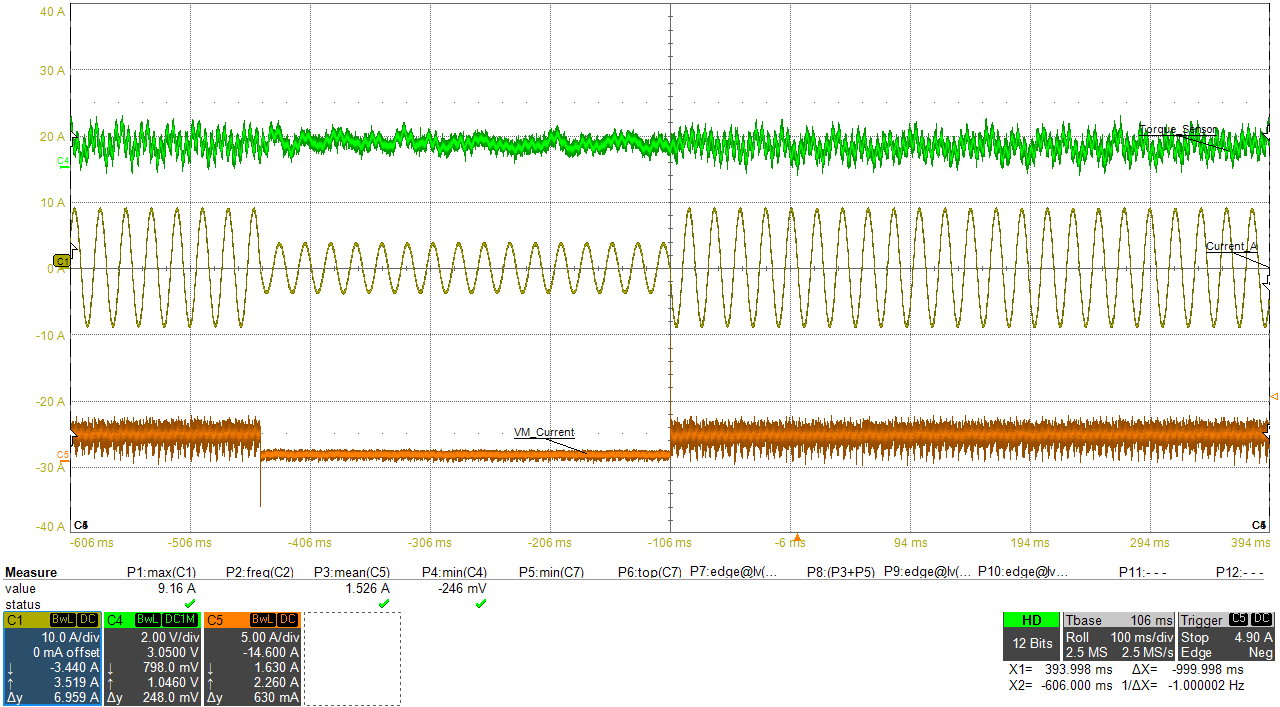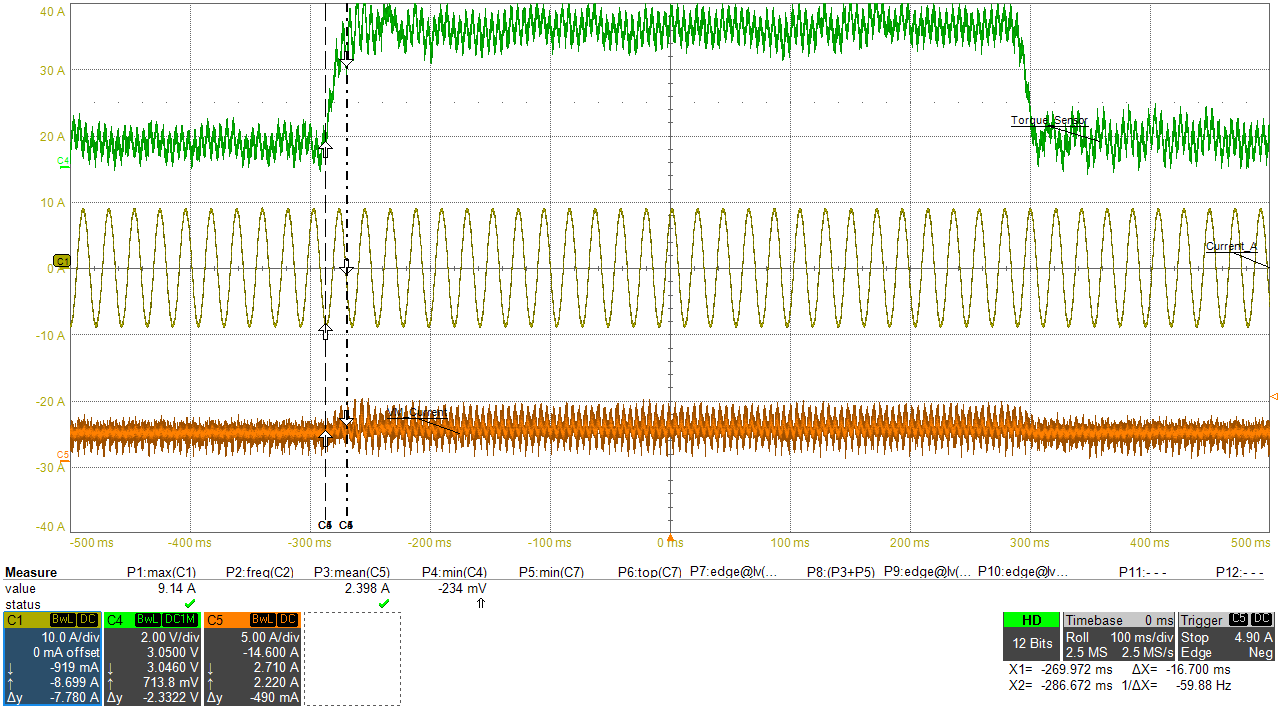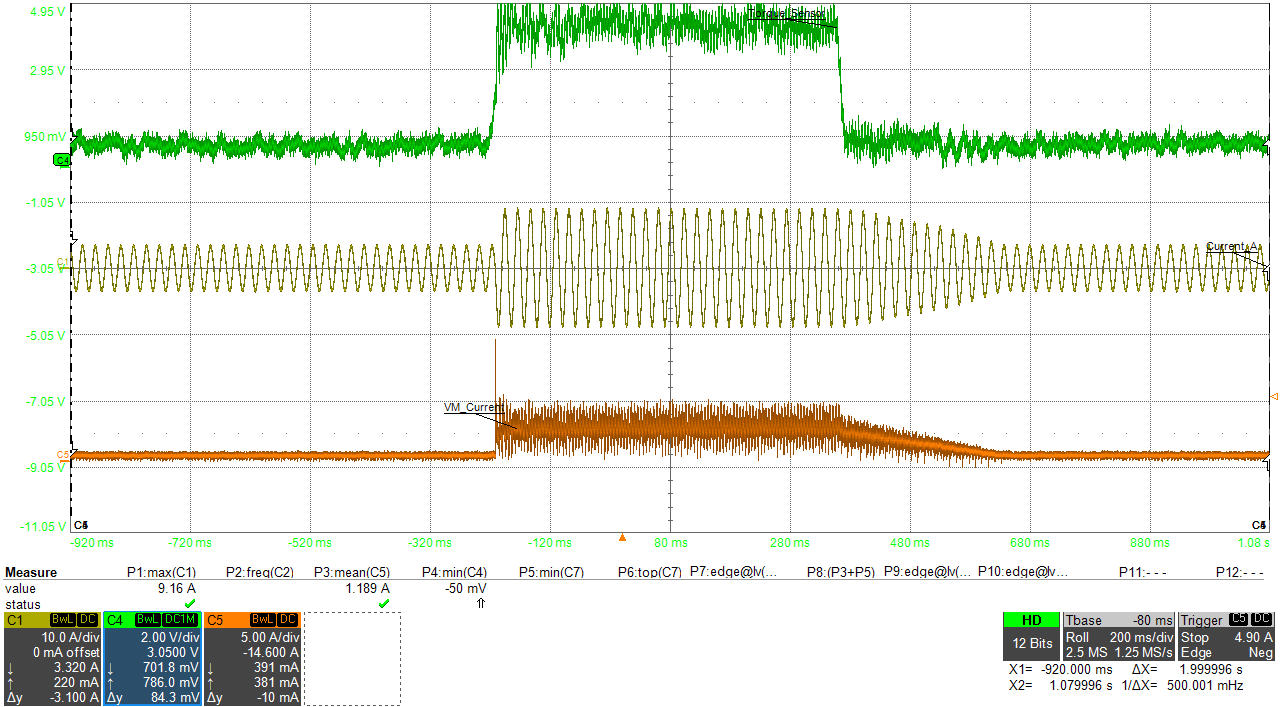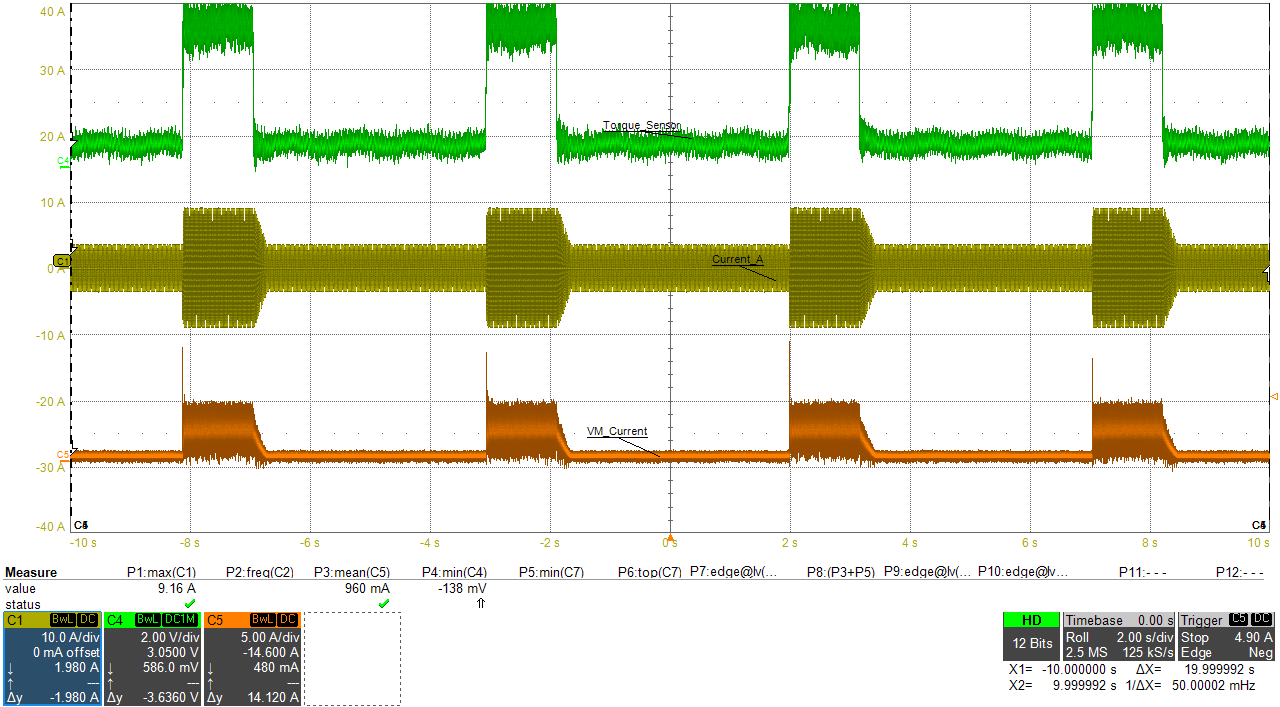SLVAFF1 January 2023 DRV8452 , DRV8462
PRODUCTION DATA
- Abstract
- Trademarks
- 1Power Efficiency of Stepper Motor Drivers
-
2Auto-Torque
- 2.1 Auto-Torque: Learning Principle
- 2.2 Current Control
- 2.3 PD Control Loop
- 2.4
Impact of Auto-Torque Tuning
Parameters
- 2.4.1 Impact of Learning Parameters on Load Transient Response
- 2.4.2 Impact of ATQ_UL, ATQ_LL Hysteresis
- 2.4.3 Impact of Load Profile on Power Saving
- 2.4.4 Adaptive ATQ_UL, ATQ_LL
- 2.4.5 PD Parameter Dependency Curves
- 2.4.6 ATQ_CNT at Different Motor Speeds
- 2.4.7 ATQ_CNT at Different Supply Voltages
- 2.4.8 Motor Temperature Estimation
- 2.5 Efficiency Improvement With Auto-Torque
- 3Case Studies
- 4Summary
- 5References
3.2.2 Textile Motor With Auto-Torque
In this application, the stepper motor was subjected to load torque transients between 50 mNm and 1.5 Nm at a fast rate of 1.5 Nm/15ms. The on time for the peak load was roughly 1 s, and the duration between peak load events was 4 s, corresponding to a 20% duty cycle for the peak load.
Figure 3-6 shows the snapshot of the learning routine for this motor.
The auto torque learning routine was run at no load with the following parameter values:
- ATQ_LRN_MIN_CURRENT = 1011000b
- ATQ_LRN_STEP = 00b
Values for the ATQ_LRN parameters are:
- ATQ_LRN_CONST1 = 43
- ATQ_LRN_CONST2 = 99
 Figure 3-6 Learning Routine Snapshot for
Textile Motor
Figure 3-6 Learning Routine Snapshot for
Textile MotorThe parameters for current control and PD loop control were selected as:
- ATQ_TRQ_MAX = 216
- ATQ_TRQ_MIN = 80
- ATQ_UL = 13
- ATQ_LL = 12
- KP = 1
- KD = 15
- ATQ_D_THR = 7
- ATQ_ERROR_TRUNCATE = 0
- ATQ_FRZ = 1
- ATQ_AVG = 0
Figure 3-7 to Figure 3-10 showcase the output current and supply current waveforms with and without auto-torque in the event of a load torque change. As is expected, supply current consumption is significantly lower with auto-torque.
 Figure 3-7 Textile
Motor Loading/Unloading Without Auto-Torque
Figure 3-7 Textile
Motor Loading/Unloading Without Auto-Torque Figure 3-8 Textile
Motor Loading/Unloading Without Auto-Torque
Figure 3-8 Textile
Motor Loading/Unloading Without Auto-Torque Figure 3-9 Textile
Motor Loading/Unloading With Auto-Torque
Figure 3-9 Textile
Motor Loading/Unloading With Auto-Torque Figure 3-10 Textile Motor
Loading/Unloading With Auto-Torque
Figure 3-10 Textile Motor
Loading/Unloading With Auto-TorqueBased on lab measurements:
- Power consumed without auto-torque = 24 V * 2.345 A = 56.28 W
- Power consumed with auto-torque = 24 V * 960 mA = 23.04 W
- This represents a power saving of 59 %.
- Power loss in the motor without auto-torque = (9 A * 9A * 0.15 Ω) = 12.15 W
- Power Loss in the motor with auto-torque = (0.2 * 9 A * 9 A + 0.8 * 3.6 A * 3.6 A) * 0.15 Ω = 4 W
- This corresponds to a heat reduction of 67 % in the motor coils.